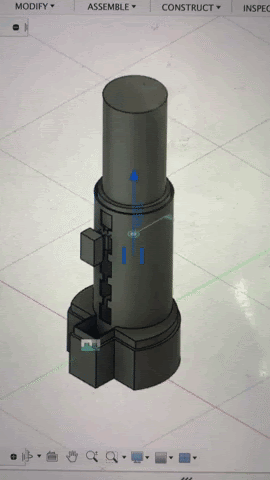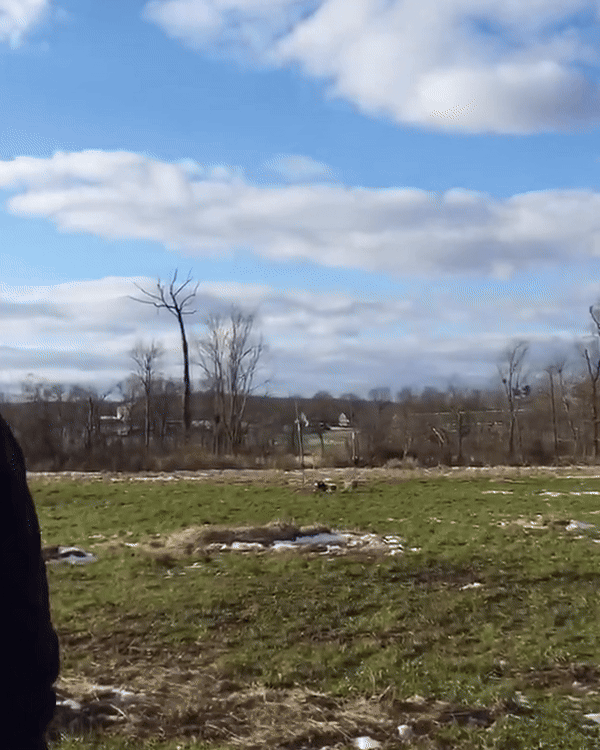Highlighted Work
Visit the pages below to view some of my proudest project work as of late

My Older Work
The projects and work that built up to where I am today

Split Hopkinson Pressure Bar
A Split Hopkinson Pressure Bar (SHPB) is a testing apparatus used to characterize the dynamic stress-strain response of materials. Typically, SHPB systems only achieve strain rates on the order of 100s^-1, but through a thorough analysis of SHPB literature and theory, our group designed a system to evaluate materials at strain rates of 1000 – 5000s^-1. This was achieved by designing a miniaturized system, shrinking a usually 10+ meter long system down to 4 meters. This system was designed with the goal of studying materials with low mechanical impedance, specifically, polymers.
Split Hopkinson Pressure Bar




Successes:
-
Designed two potential SHPB systems
-
Designs budgeted at ~$7,000 compared to $100k+ in industry
-
System I helped design was eventually implemented into an NEU lab by my advisor
2020

Trem-Lock
A vibrato system on a guitar allows users to temporarily change the pitch of strings on the guitar. On electric guitars, these are commonly known as “whammy bars” or “tremolo arms.” Guitarists often find it useful to lock the tremolo arm to prevent accidental modulation. Although some guitars have tremolo arms capable of locking, there is no good solution for retrofitting a guitar that comes without this feature. Trem-Lock is a product that solves this problem.
Trem-Lock x Generate




Successes:
-
Uses existing holes for non-permanent mounting
-
Holds low profile to maintain ergonomics
-
Allows for a quick (un)lock control
-
Uses off-the-shelf spring-pins to clearly define lock & unlocked positions
Fall 2020

Light Seeking Robot
In my Freshman Year Cornerstone of Engineering Course, we were tasked with designing an espionage robot to autonomously seek out a light source in a dark room and signal when the light was found. Myself and two of my peers worked together to design an Arduino robot using DC motors, ultrasonic sensors, and photoresistors to handle the robot's navigation. The robot also used a speaker and LCD screen to output a signal that the light source was detected. The robot featured a large red E-stop button. This was a good experience to learn Arduino, practice CAD modeling, and use basic tools and 3D Printing.
Light Seeking Robot


Spring 2019



Street Design
During the Summer of 2019, I went on a study abroad to the Netherlands studying Sustainable Urban Transportation. The primary goal of this program was to study Dutch transportation infrastructure and policies, especially regarding bicycling, to determine how the same designs could be applied in the United States to provide safer and greener living in urban environments. During the program, we had two primary projects to fully redesign two major Boston streets that experienced higher than average transportation incidents.
Urban Street Design




Summer 2019

Paradigm Hyperloop
Paradigm Hyperloop was an international organization between Northeastern and two universities in St Johns, Canada that competed in the Annual SpaceX Hyperloop Pod Design Competition. During my time on the team, I worked on a number of tasks around the pod, but my main project saw me researching air bearing levitation. In the Hyperloop alpha paper, levitation is a core component of the design, achieving lift by manipulating ground effect aerodynamics and injecting compressed air under the pod with air skates.
Paradigm Hyperloop



Our Work:
-
Designed the bearing in SolidWorks, using industry research to optimize design
-
Created CAD Models of Bearing Test Mounting and integrated with the Wind Tunnel Subteam's Work
-
Built Functional ANSYS Fluent model of the bearing
-
Developed air supply system
-
Built a thrust and lift calculator based off of fluid mechanic theory
2019-2020

Push Beauty
Current makeup containers such as jars and chubby sticks pose accessibility concerns: their usage requires motions that can be complex and often require two hands. Additionally, many are created from single use plastics with no method of recyclying. Push Beauty aims to address the lack of accessible makeup products by designing sustainable makeup containers inspired by common one-handed tools. On this project, I worked to design a prototype chubby stick inspired by retractable box cutters.
Push Beauty x Generate




Successes:
-
Created two iterations of 4-Piece Chubby Stick usable with one hand
-
Product Tube is replaceable, reusing case to limit waste
-
Featured flat faces to prevent rolling or tipping when put down
Spring 2021

Rocketry
During my freshman year of college, I was involved in Northeastern's Chapter of the American Institute of Aeronautics and Astronautics (AIAA). I took part in an extracurricular Intro to Rocketry course to design and build a model rocket over the course of a semester. Together with a partner, we built a single stage rocket, using OpenRocket software to model and simulate the rocket launch. Our rocket was approximately 56 inches tall and used a G class motor, the largest size rocket motor that can be purchased without a high power certification. We successfully launched our rocket to a height of 1600+ feet and safely recovered it to recycle the materials into other rocket projects.
Intro to Rocketry


Fall 2018







Architecture
I attended a vocational high school where I pursued a trade in Architectural Drafting and Design. As a result, I started using CAD and BIM software in the form of AutoCAD, SolidWorks, and Chief Architect back in 2014. Over the course of my studies, I worked on a large number of residential and industrial architectural designs, drawing floor plans, elevations, sections, construction details, presentation drawings, and creating scale models. Additionally, I received training in the architectural design and engineering process, interior design process, construction process, construction trade math, and construction safety. View some of my work below (click images to open PDFs)!
Architecture
2014-2018




